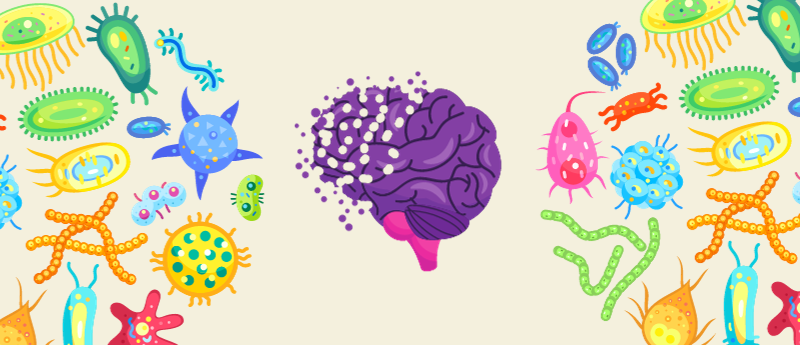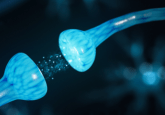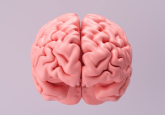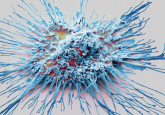Could a virus be the missing piece of the Alzheimer’s puzzle?

 “We had incredible trouble getting it published. It was just extraordinary,” says Ruth Itzhaki (left), a researcher who has been studying the connection between viruses and Alzheimer’s disease for the past 30 years. In the early 90s Itzhaki found that, in cell culture, herpes simplex virus-1 (HSV-1) caused the formation of β-amyloid peptides, which is a precursor to the β-amyloid plaques associated with Alzheimer’s. “People just wouldn’t believe it.” In the decades since, Itzhaki has continued to study the link between pathogens and Alzheimer’s, despite antipathy from the scientific community, and is now a Visiting Professorial Fellow at the University of Oxford (UK), as well as Professor Emerita at the University of Manchester.
“We had incredible trouble getting it published. It was just extraordinary,” says Ruth Itzhaki (left), a researcher who has been studying the connection between viruses and Alzheimer’s disease for the past 30 years. In the early 90s Itzhaki found that, in cell culture, herpes simplex virus-1 (HSV-1) caused the formation of β-amyloid peptides, which is a precursor to the β-amyloid plaques associated with Alzheimer’s. “People just wouldn’t believe it.” In the decades since, Itzhaki has continued to study the link between pathogens and Alzheimer’s, despite antipathy from the scientific community, and is now a Visiting Professorial Fellow at the University of Oxford (UK), as well as Professor Emerita at the University of Manchester.
What causes Alzheimer’s?
The cause of Alzheimer’s remains unknown, but a lot of attention, and therefore funding, has been directed to the ‘amyloid cascade hypothesis’, the idea that the deposition of amyloid- β peptides in the brain is key to the development of Alzheimer’s disease [1]. Abnormal levels of β-amyloid proteins are found clumped together in the Alzheimer’s brain, forming plaques that collect between neurons. Additionally, abnormally phosphorylated tau proteins collect in brain regions involved in memory. Whilst these protein structures have been implicated in Alzheimer’s, what causes them to form is unknown.
The role a virus could play in driving Alzheimer’s disease, specifically HSV-1, was suggested by Melvyn Ball who published a paper on the subject in 1986 [2]. Ball made this connection due to the similarities between herpes simplex encephalitis, an acute disease of the brain caused by HSV, and Alzheimer’s disease. The two diseases affect the same regions of the brain and mainly affect older people.
Perhaps it is the obsession with amyloid plaques that has led to the continued rejection of the idea that a virus could also play a role in Alzheimer’s. Itzhaki also suggests it might be because “a few decades ago, everybody was claiming that every disease was caused by some pathogen, and I think that made people suspicious because obviously, that wasn’t the case. One other reason is that people who were interested in the amyloid idea thought that was the cause [of Alzheimer’s disease], although they didn’t have any evidence for that.” However, Itzhaki stresses that the amyloid hypothesis and pathogen hypotheses are not at odds with each other and that “what we’re saying doesn’t exclude the importance of amyloid, all we are saying is that’s probably not a cause, it’s an expression of what’s happening.”
Finding microbes in the brain
In 1991, Itzhaki’s research group published a paper about their discovery of the presence of HSV-1 DNA in human brains, the first microbe to be detected definitively in normal human brains [3]. “We had difficulty getting it accepted by any journal,” but eventually, it got accepted by the Journal of Medical Virology. They used PCR, which was still in its infancy at the time, to look for the virus in post-mortem brain samples with and without Alzheimer’s. “We found [HSV-1 DNA] present in a high proportion of elderly people, but in much lower proportions in younger people,” explains Ruth. “That was very interesting and suggests that the virus travels from the peripheral nervous system, where it’s known to lodge for life, up to the brain, perhaps in middle age.” HSV-1 establishes a latent infection in the peripheral nervous system where it remains until it is reactivated.
In a paper published in Neuroscience Letters, Ruth’s group showed that intracellular levels of β-amyloid peptides increase in neuronal and glial cells cultured with HSV-1, while amyloid precursor protein levels decrease [4]. Ruth suggests that in the brain, the reactivation of HSV-1 causes both direct and indirect (inflammatory) damage, which contributes to the formation of β-amyloid and the amyloid cascade, leading to neurodegeneration and Alzheimer’s disease.
More recently, Ruth has been working with Dana Cairns and David Kaplan (both at Tufts University, MA, USA) using a 3D brain-cell model of human-induced neural stem cells (hiNSCs) to see how HSV-1 infection affects the brain. “After infection, it produced changes which were very much like those that occur in Alzheimer’s disease [5],” says Itzhaki, such as the formation of amyloid plaques, neural inflammation, decreased functionality and the formation of gliosis (the creation of more glial cells, which can cause scars in the brain and impact its function).
Further studies by Cairns and Kaplan, with Ruth [6], showed that using the model in which the HSV-1 DNA has been made latent, infection with varicella zoster virus (the virus that causes chicken pox and shingles), leads to reactivation of the virus, and consequently, the AD-like changes appear. In ongoing work yet to be published by Cairns et al, further 3D brain-cell model studies show similar changes after infection with other pathogens, and after another type of injury. These data are consistent with the finding that in life, infections increase the risk of Alzheimer’s and the concept that infections cause reactivation of latent HSV1 in brain tissue. Another study, with Ken Muir and other epidemiologists at Manchester University, has shown that vaccination against shingles reduces the risk of Alzheimer’s, presumably by reducing shingles incidence and hence HSV1 reactivations [7]. All these results further implicate HSV-1 in the disease.
Currently, only palliative care is available for Alzheimer’s disease so investigating the source of amyloid-β plaques, abnormally phosphorylated tau and other features could lead to more treatment options. If the source is indeed a virus, such as HSV-1, then antiviral agents may be able to slow the progression of the disease, provided the mechanism depends on viral DNA replication [8].
An uphill battle
Science is all about finding the ‘new’ and making novel discoveries, and yet, time and again any ideas that are considered too out of the box are dismissed and researchers face an uphill battle to obtain funding to investigate. Ruth’s experience and continued determination to study the link between viruses and Alzheimer’s disease reminded me of Sarah Elizabeth Stewart, a Mexican-American researcher who opened the doors to viral oncology. Her research proposal to study the viral link to cancer was rejected multiple times but eventually, she was successful in obtaining funding and discovered the first polyomavirus, a tumor-inducing virus. Similarly, Katalin Karikó spent many years of her career collecting rejections for her work on harnessing mRNA technologies for vaccine and therapeutic purposes. Her research was rejected by several journals in 2005, but Karikó received the Nobel Prize in Physiology or Medicine in 2023, along with Drew Weissman, and played an undeniable role in saving lives and the return to a more ‘normal’ life following the SARS-CoV-2 outbreak. “People are right to be suspicious, but they’re not right to damn everything and say it’s no good and it’s rubbish and it shouldn’t be supported,” says Itzhaki. These instances throughout history are a reminder that science is not only driven by scientists but also by academic journals, funding bodies, governments and research institutions.
“Even though there was huge hostility to the idea, I should say a small number of people strongly supported it, but they were always overruled,” says Itzhaki. Although, “in the last 5 to 10 years, things have really improved,” and more researchers are investigating how a virus could be involved in Alzheimer’s disease.
Itzhaki had tried repeatedly to obtain funding for a clinical trial; however, these grant proposals were repeatedly refused. Now, a clinical trial by another group is underway to see the effects of Valacyclovir, an antiviral drug used to treat herpes virus infections, on those with mild Alzheimer’s disease who also test positive for HSV-1 or HSV-2. The study will end in 2024. “A successful result will be terrifically wonderful for patients as well as scientists,” comments Ruth. “But a negative result does not disprove [that HSV-1 is involved in Alzheimer’s].” The only way to find out if HSV-1, or another virus, is involved in Alzheimer’s disease is to fund research to answer this question and not to dismiss this hypothesis completely.
About the interviewee
Ruth Itzhaki is a Visiting Professorial Fellow at the University of Oxford, as well as Professor Emerita at the University of Manchester. Her research topics have included the first studies on the accessibility of chromatin, which helped elucidate its structure, the role of viruses in dementia, and of APOE in determining susceptibility to, or outcome of, viral infection.
In addition to her scientific work, Ruth has written a book that she is looking to publish, concerning attitudes to and treatment of women in certain developing countries, especially the Indian sub-continent and sub-Saharan Africa. It is intended for general readers, though it might be usable in an introductory course for social anthropology or gender studies students.





